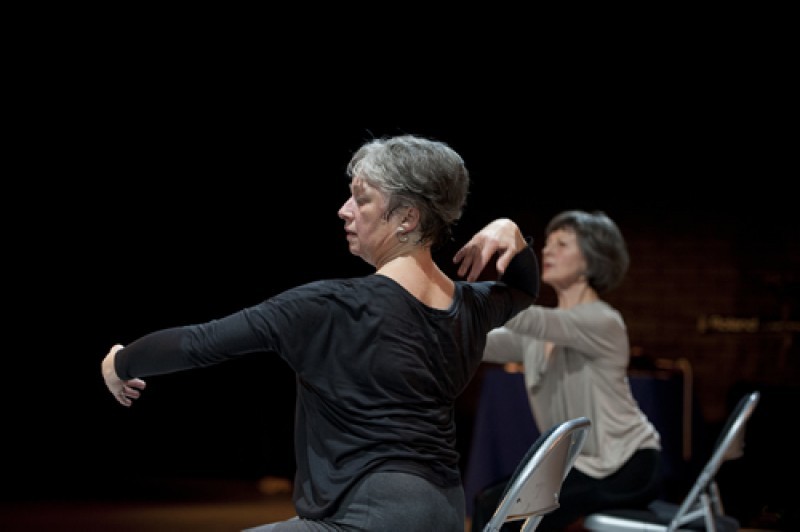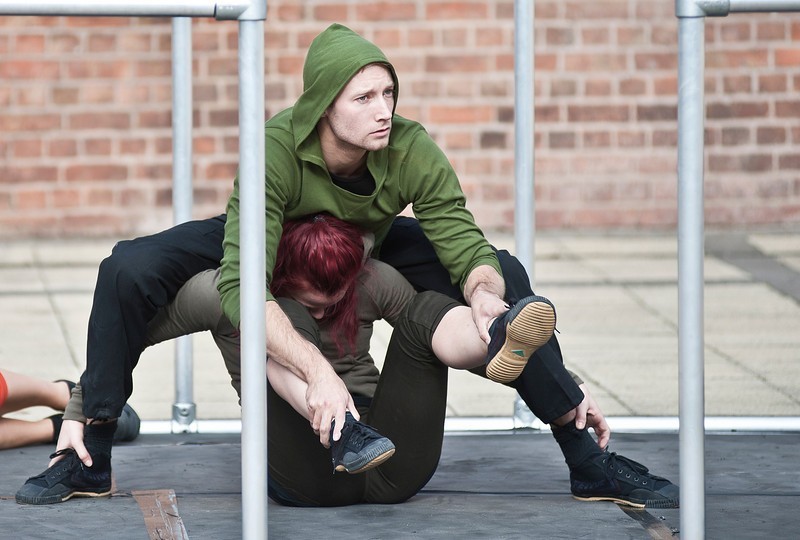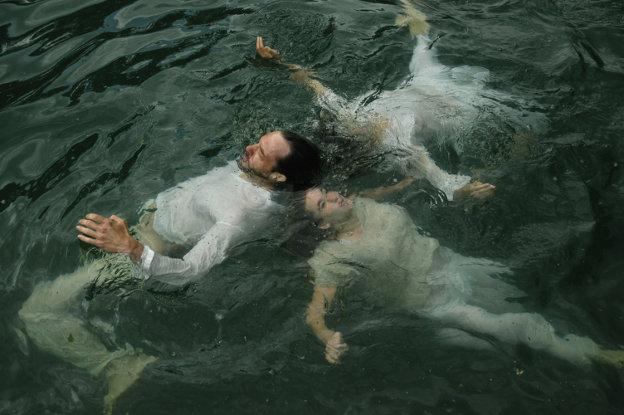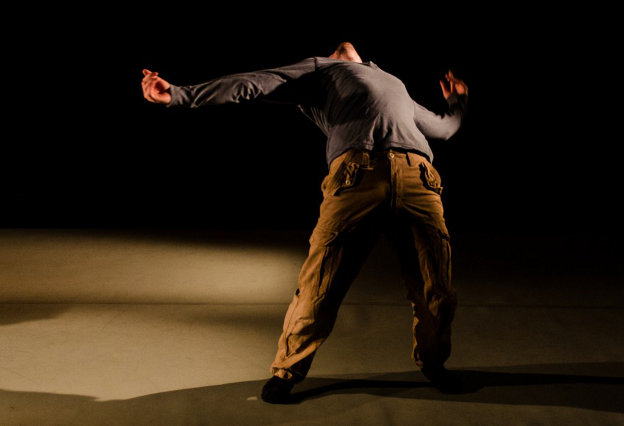 Dancin’ Oxford 2014, a yearly festival featuring premieres from both emerging and well established artists over an eleven day period, launched in Oxford City Centre on 1 March. For the fourth year running, Moving with the Times, commissioned and produced by Pegasus Theatre, and Dancin’ Oxford featured local choreographers whose new, short works were shown in the context of working towards developments for future performances. A hotchpotch of varying stages of growth and wavering strengths. Something a little different with an audience full of excited giggling children, the matinée performance crossed the disciplines of dance with speech, text and video projection.
Dancin’ Oxford 2014, a yearly festival featuring premieres from both emerging and well established artists over an eleven day period, launched in Oxford City Centre on 1 March. For the fourth year running, Moving with the Times, commissioned and produced by Pegasus Theatre, and Dancin’ Oxford featured local choreographers whose new, short works were shown in the context of working towards developments for future performances. A hotchpotch of varying stages of growth and wavering strengths. Something a little different with an audience full of excited giggling children, the matinée performance crossed the disciplines of dance with speech, text and video projection.
Racing With The Sun, by Mamé Yansane opened the show with a piece drawing on the body’s memory, revolving around four chairs including a wheel chair and a child’s stool. Am I Here Again, choreographed and performed by Marina Collard, began as a down and dreary, plodding and methodical piece, slowly edging in and out of the corner but gradually transformed into an ebbing and flowing solo with an elegant and constant dynamic that is hard to define. One Two Wonder, by Anamorphic Dance Theatre, featured a mother and young child dancing through contact. A curious connection between the two performers, made possible only by their unique relationship, was delicate, beautiful, and trusting despite some unimaginative vocabulary and form. Politics of Love combined sung and projected words with dancing and silhouette, in a narration of several poems from a new collection by the same name. An abundance of stimuli overwhelmed and undermined the multiple interpretations of love. A less literal interpretation of the words through movement would offer opportunities to explore more complex layers of intent or meaning that the theme and medium had so much potential for. This piece had some sporadic moments of beauty but they became muddied by the competing presence of the two dancers and an extremely charismatic narrator. Redefining the relationships between performers and simplifying the material would allow for deeper choreographic exploration to take place.
Every Grain performed by Hannah De Cancho’s company Sole Rebel Tap was in vogue with its vintage theme. Six 50s pin-ups tore up the stage, cheekily attired in tap shoes and playsuits. The piece opened a little tentatively with a wash of unforgiving lighting but the power and presence grew with each track. The more theatrical lighting in Little Richard’s Slippin’ and Slidin’ improved the dynamism still further. A medley of classic tunes including Dave Brubeck’s Take Five (which no tap show would be complete without), were glued together with comic sketches, from the struggle to open a deck chair to making and drinking cocktails, which allowed the dancers’ characters to gradually emerge with fun and frolics. It would be interesting to see the choreography develop to allow the individual dancing styles and personalities of the dancers to flourish even more. The tap vocabulary varied from bluesy, to Lindyhopping to hoofing and was choreographed with flourishes of dynamism and staccato highlights broken by invaluable pauses, thoughtfully interpreting each music piece with the appropriate stylistic expression and rhythms.
Ending with a sand dance where low lighting revealed six pairs of feet cheekily playing in real sand, the girls were ushered away by My Sandman himself. The only thing missing was a cheeky encore where the girls show him whose boss, returning for an explosive tap dance in the sand after American tapper Bill ‘Bojangles’ Robinson. You don’t need permission to be sassy, the Sole Rebel Tap girls have definitely got it, so flaunt it even more! Artistic Director Hannah De Cancho plans to take this piece to outside venues and beach locations, building on the summer holiday theme which will inject the charming work with the energy and interaction it deserves from a less formal audience.




